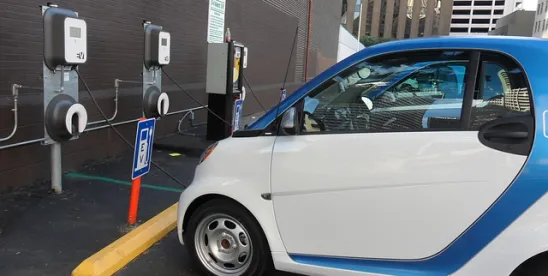Certain changes in regulations, somewhat challenging for the renewable energy sector, and the government’s declarations of support to the coal industry might suggest that Poland is not much interested in “going green”. Still, it turns out that electric cars may fit in its energy strategy just well.
Surely, the electric cars are as “green” as the energy powering them. In the case of Poland though, the energy is still sourced mainly from the coal-fired power plants. Nevertheless, Poland is notorious for its air pollution, and in the cities in particular, this is to a great extent caused by exhaust emissions. Expansion of electric vehicles may thus be a relief to the lungs of many people now suffering from the poor air quality.

Dream Big
The Plan for Development of E-Mobility in Poland, announced by the Ministry of Energy in September 2016, and revised after consultations in November 2016, assumes that by 2025 there will be 1 million electric vehicles on the Polish roads. Reaching this target requires a drop in the prices of such vehicles, and further development of the energy grid and recharging infrastructure. Car-pooling and car-sharing are also taken into account as possible support to the transition, since these models allow the costs to be shared among many individuals, making the electric vehicles more affordable.
The government welcomes the expansion of electric vehicles not only as means of reducing the air pollution, but also as a way of decreasing the import of oil; and on the other hand, increasing the demand for electric energy, which may be produced domestically. Another important aspect is the potential for development of new technologies in Poland; for example, those connected with the storage batteries and other components for the e-vehicles. Industry demand is expected to boost scientific research in this field.
According to the Plan, the first stage ending in 2018 will entail the popularization of the idea of electromobility, adoption of necessary regulations and creation of prototypes. Short production series and development of the recharging infrastructure are expected in the second stage, planned for the years 2019-2020. The third stage (years 2020-2025) assumes production of electric vehicles and/or its components in Poland, and at that time, the recharging infrastructure is expected to be able to service 1 million electric vehicles.
As for the regulations, the Plan and the accessory National Framework Policies for Development of the Alternative Fuels Infrastructure indicate the need to:
-
Distinguish the sale of the vehicle recharging service, as opposed to the regular sale of electric energy, which requires a concession, and define the relations between the seller of the vehicle recharging service, the recharging point operator, the seller of the electric energy and the distributor of the electric energy
-
Facilitate the construction of the recharging points and their connections to the grid, which now face ambiguous provisions of law and require that newly constructed buildings be adjusted to the installation of such recharging points
-
Develop a system informing about the availability of the recharging points
-
Expressly entitle municipal authorities to introduce measures prohibiting the use of high-emission vehicles in specified zones
-
Introduce charges for the use of the vehicles with combustion engines in the city centres
The detailed regulations are still in preparation; although, one draft provides for establishment of a fund that would support the building of recharging infrastructure, the electric vehicles producers and the public transport using such vehicles. A more comprehensive draft is expected in the first quarter of 2017, way past the deadline of 18 November 2016 for transposition of the Directive 2014/94/EU of the European Parliament and of the Council of 22 October 2014 on the deployment of alternative fuels infrastructure.
The Skeptics and the Enthusiasts
The Plan was hailed as too ambitious by some, and the authors declared that analysis in the first quarter of 2017 may result in revisions to the same. Nevertheless, it also incited some enthusiasm on part of the early birds of the Polish e-mobility sector, and the renowned Warsaw University of Technology is already involved in the creation of so-called “Electromobility Centre”, along with several energy producers. Moreover, there are public funds available for research and development of innovative vehicles; for example, a program under the name of Innomoto (applications can be filed by 20 January 2017).
Even if the “one million electric vehicles” goal is reached later than by 2025, the Plan is a clear sign for the investors, producers and scientists that the Polish government intends to support the projects connected with electromobility.




 />i
/>i

